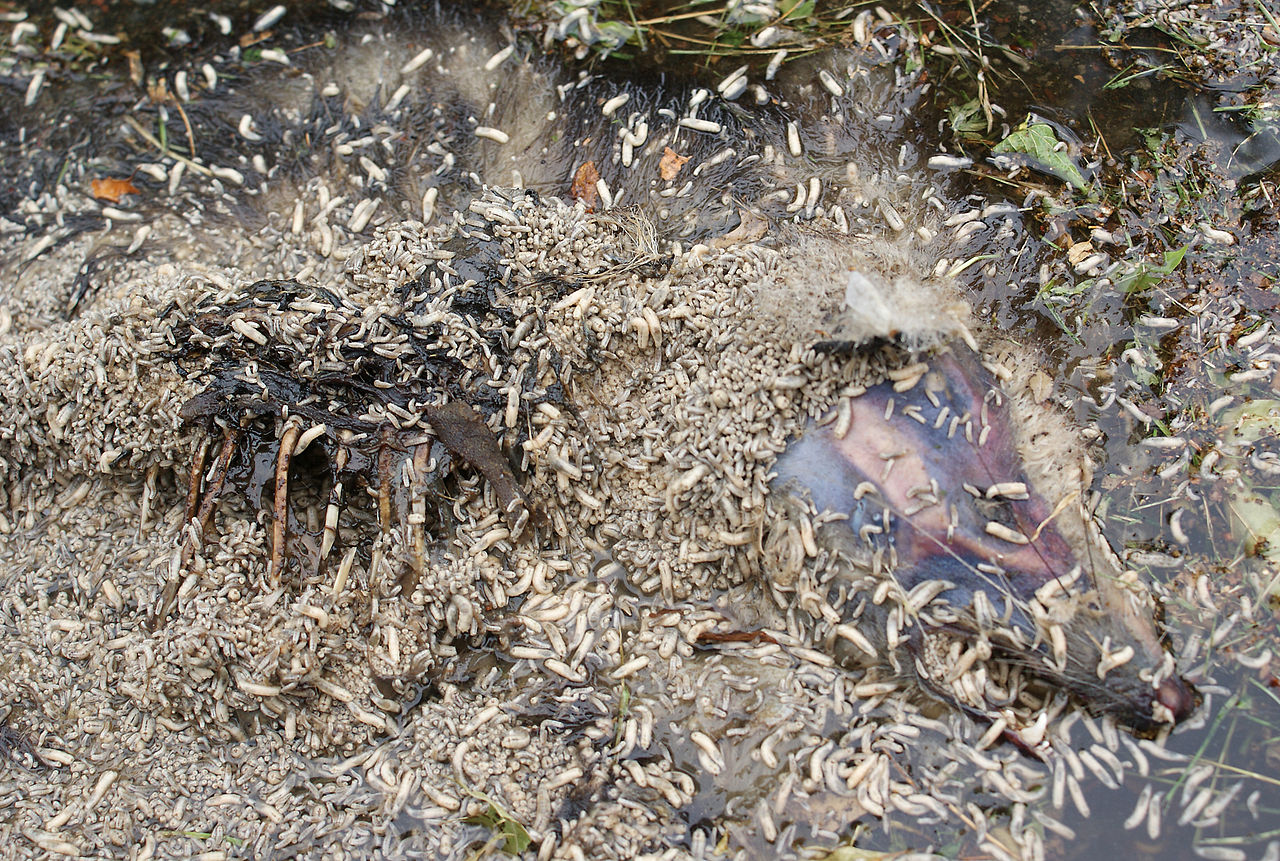
Maggots Ring the Alarm Bells
Directory of Exhibits
Catalogue of Evidence
Library
Search Museum Text
Print this page

|
Maggots Ring the Alarm BellsDirectory of Exhibits
|
|
|
Many, but not all, of the bodies buried under the several feet of the mythical debris from the "structural collapse" were infested with maggots, or fly larvae.
Flies cannot burrow deep underground, as can worms. "The horrific picture of 'worms' devouring a buried corpse is false. Flies will lay eggs on a body even before it is dead, and their wriggling, wormlike larvae, known as maggots, will hatch out in just under twenty-four hours. The cycle is so regular that it can sometimes be used to establish the time of death. But maggots cannot live underground." (Emphasis added) (Maples, pg. 48.)
The Autopsy Reports, the Justice Department Report, and Dr. Peerwani's courtroom testimony all assure us that many people in the concrete room were buried under the structural debris from the collapse of the concrete room. Certainly that should have been equivalent to "underground."
How then to account for the fact that many of the bodies were infested with maggots if maggots cannot live underground?
Dr. Maples tells us more: "My colleague, Doug Ubelaker of the Smithsonian Institution, investigated an ancient Arikara Indian burial site in South Dakota and found that fly pupal cases were present in 16.4 percent to 38.3 percent of the burials at five sites, even though the burials were over two feet deep. How did they get there? Flies and beetles do not burrow more than a few inches below the ground. The answer is, the insects found their way to the corpse before it was buried, and were buried alive with it." (Maples, pg. 48.)
The maggots in the bodies of those buried under the non-existent "structural collapse" should have been a signal for the Smithsonian experts advising Dr. Peerwani that the bodies may have been on the surface, become fly blown, and were then buried.
Dr. Ubelaker points out in his book that the presence of maggots in a body can help to establish the time of death (Ubelaker, pg. 157-166).
"Wherever there is a smell of death, flies come in great numbers," says Dr. Ubelaker. They lay their eggs in open orifices. The eggs hatch. The resultant larvae feed, grow, and pupate before becoming adults." (Ubelaker, pg. 164).
When using maggots to determine the time since death, the forensic scientist must identify the maggot's species. The different species of flies have different reproductive time intervals. Species differ from one another in appearance during their growth stages. So the maggots are removed from the corpse and cultivated. When the adult fly eventually appears and the species of adult fly is recognized, the timing data from its life cycle can be applied precisely.
"By digging up pupae from under a decaying body and analyzing the age of the cases, it is possible to determine the number of generations of flies (to a point), and that number can in turn be multiplied by the length of the cycle in order to determine the period since the laying of the first egg." (Ubelaker, pg. 163.)
There is no evidence that Dr. Peerwani, his staff, Dr. Ubelaker, or Dr. Owsley were interested in verifying time since death by examining the remains for pupal cases. Why such a lack of interest in this case? After all, the murderers of these Branch Davidians were still free, and could be apprehended by the law.
Dr. Ubelaker says "Another clue that larva can sometimes provide is whether the body has been moved since time of death—even whether the victim was killed indoors or out. The common housefly, which is easily identified by its three black thoracic stripes, is primarily an indoor animal. If a body is found in a wooded area and the larvae are predominantly of that species, chances are good that the murder occurred indoors and the body was dumped." (Ubelaker, pg. 163.)
Here is another line of inquiry that was missed by Dr. Peerwani and his Smithsonian advisers.
Dr. Ubelaker worked on the case of the corpse of a homeless man found in an abandoned city building. "Based on the time of year, the degree of odor, the presence of empty pupal cases, the desiccation of some of the flesh, and the number and size of larvae still feeding, the time since death appeared to be about three months." (Ubelaker, pg. 160.)
What a pity that Dr. Ubelaker's forensic skills were not applied to the remains of the Branch Davidians—one wonders why these victims were less worthy of attention than the homeless man Dr. Ubelaker worked on.
Had he or Dr. Owsley believed that the Davidians were buried several feet under concrete rubble, the presence of maggots should have been a screaming alarm that the bodies had been moved after death.
Next: Dismemberment and Agglutination
Back: Directory of Exhibits
Back: Death Gallery Entrance
Home: Museum Entrance
Search: Museum Text